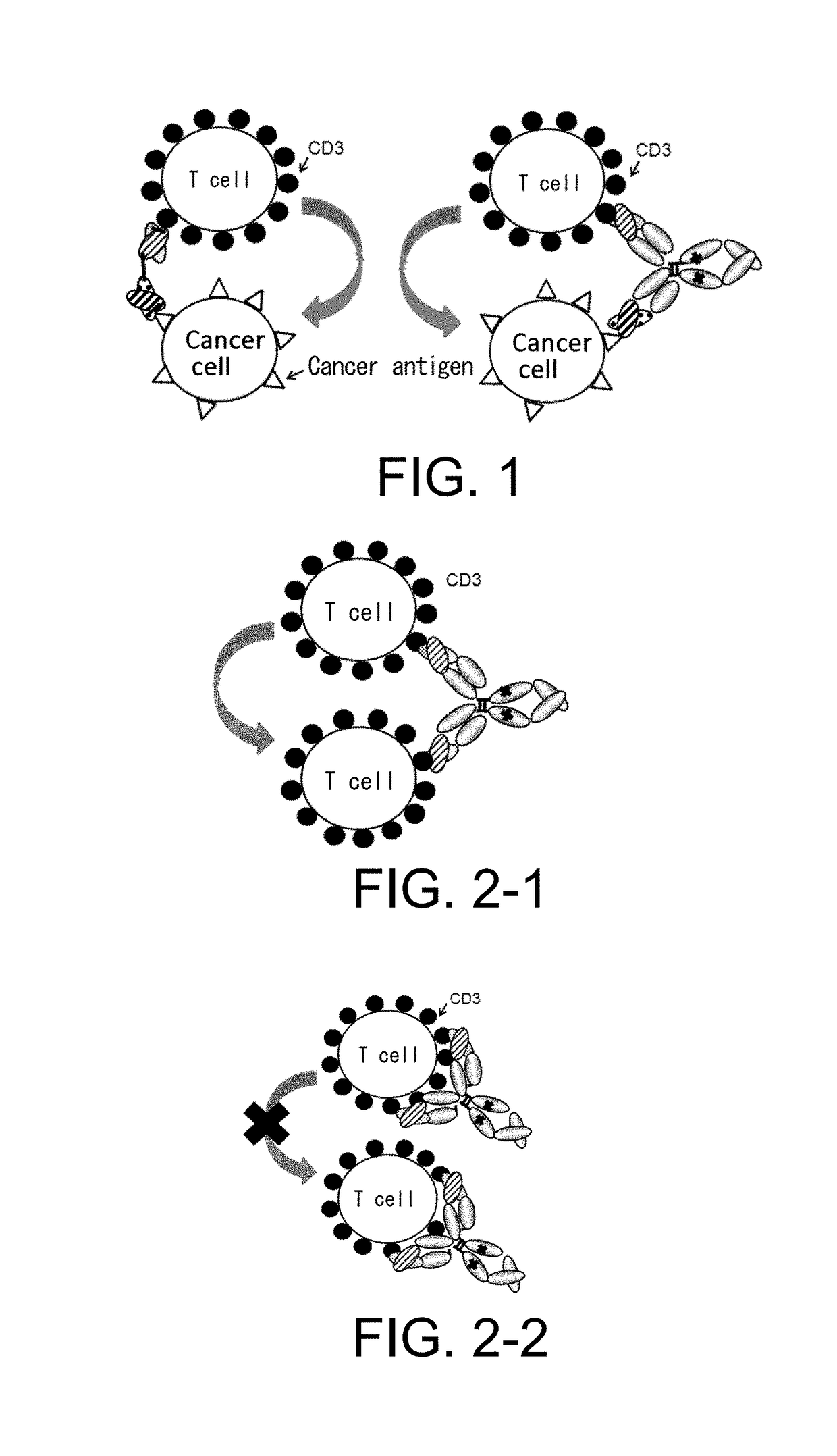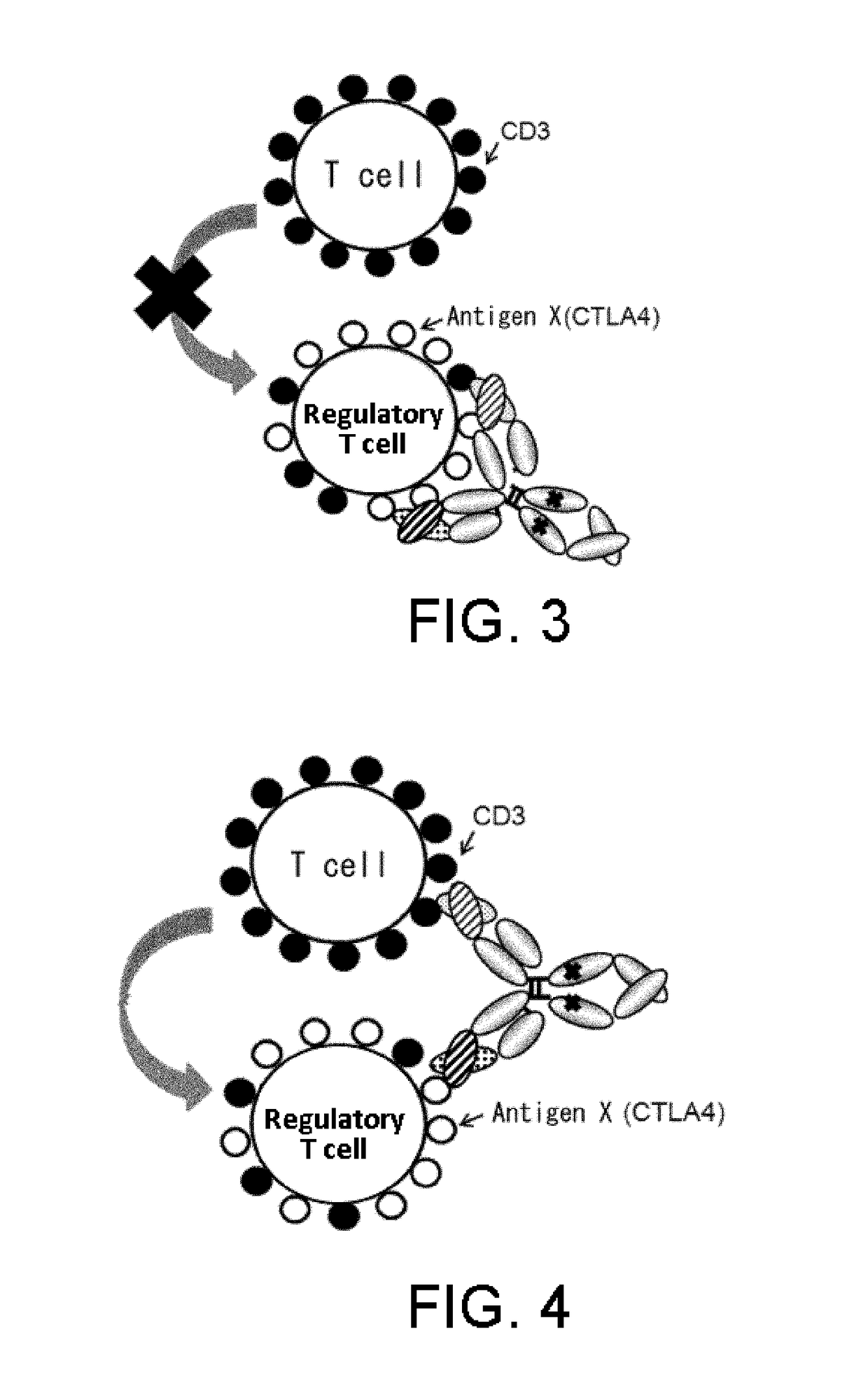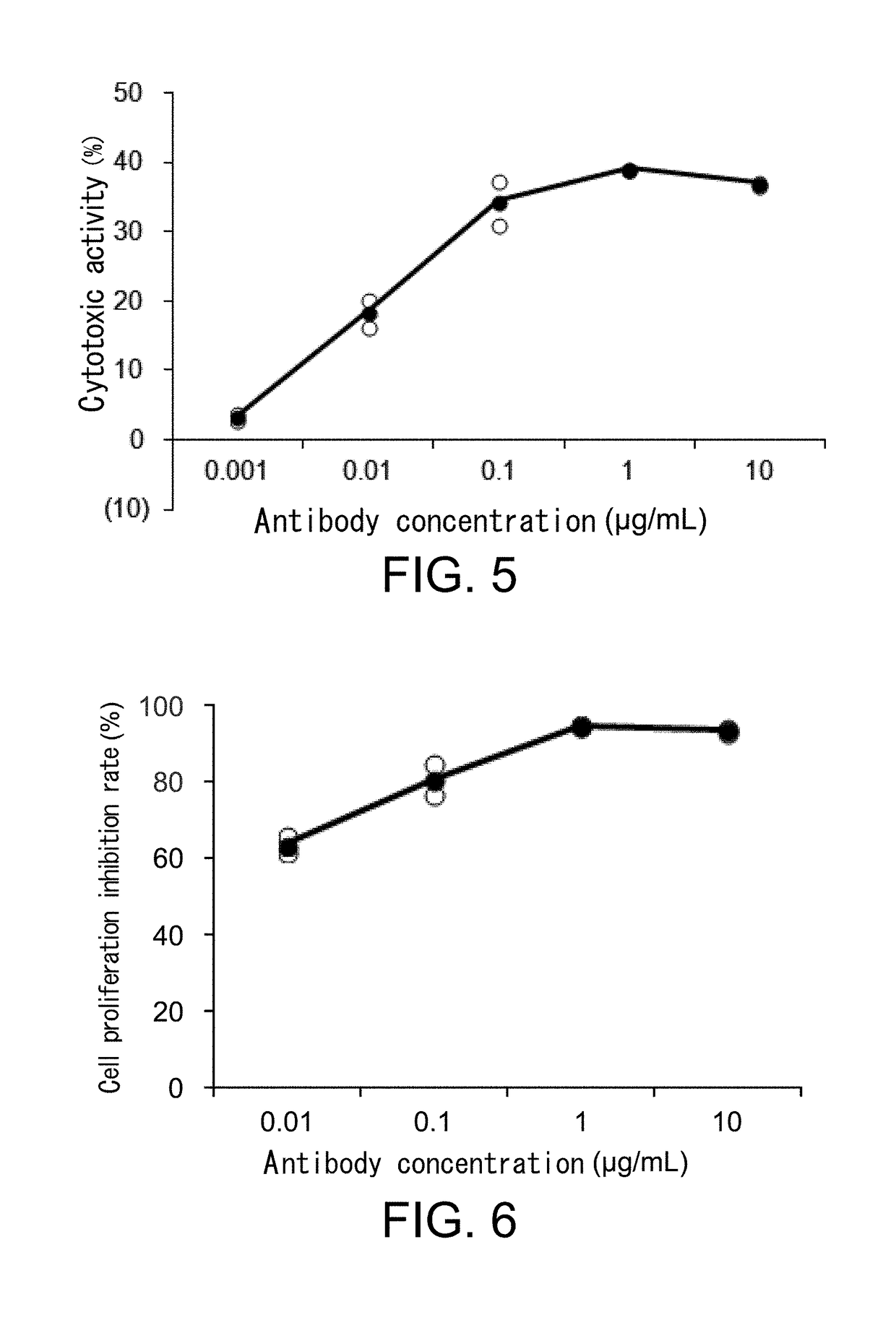Method for enhancing humoral immune response
- Summary
- Abstract
- Description
- Claims
- Application Information
AI Technical Summary
Benefits of technology
Problems solved by technology
Method used
Image
Examples
example 1
Concept of Methods for Enhancing a Humoral Immune Response
[0413](1-1) Enhancement of a Humoral Immune Response by Elimination of Cells having an Immune Response-Suppressing Function
[0414]As described above in Background Art, to exhibit strong antitumor effects, cancer immunotherapy requires both induction of cytotoxic T cells having cancer cell-specific cytotoxicity (induction of cellular immunity) and induction of antibody molecules that specifically recognize cancer cells (induction of humoral immunity) (Non-patent Document 4). However, in antibody production in living organisms, a strict discrimination is made between self and non-self, and immune response to self is rigidly regulated. Therefore, it is difficult to induce strong antibody production against closely self-similar surface antigens on cancer cells.
[0415]Methods for enhancing a humoral immune response by suppressing or eliminating regulatory T cells have been known as methods for inducing strong humoral immunity (Paten...
example 2
Production of Antibodies
(2-1) Production of an Anti-Human IL-6 Receptor Antibody, an Anti-Mouse CTLA4 Antibody, and an Anti-Keyhole Limpet Hemocyanin (KLH) Antibody
[0420]An anti-human IL-6 receptor antibody (H237) was produced. Heavy chain variable region H237 (SEQ ID NO: 50) and light chain variable region L104 (SEQ ID NO: 51) were used as the variable regions, and wild-type human heavy chain constant region hIgG1 (SEQ ID NO: 52) and wild-type human light chain constant region k0 (SEQ ID NO: 53) were used as the constant regions.
[0421]An anti-mouse CTLA4 antibody (hUH02UL01-ADCC) was produced. Heavy chain variable region hUH02 (SEQ ID NO: 54) and light chain variable region hUL01 (SEQ ID NO: 55) were used as the variable regions; and the constant regions used were mouse heavy chain constant region mFa55 (SEQ ID NO: 56), which had been modified to increase Fcγ receptor-binding to thereby enhance NK cell-mediated ADCC activity, and wild-type mouse light chain constant region mk1 (SEQ...
example 3
Evaluation of Anti-Drug Antibody Production in Mouse Models of Autotransplantation
(3-1) Production of Syngeneic Tumor Cell Line Engrafted Mouse Models
[0429]BALB / cAnNCrlCrlj mice, C57BL / 6NCrl mice, and C3H / HeN mice were purchased from Charles River Laboratories Japan, Inc.
[0430]Tumor cell lines to be autotransplanted into mice were CT26, Renca, MethA, B16 / BL6, AE17, and FM3A. CT26, Renca, or MethA cells were transplanted subcutaneously to BALB / c mice; B16 / BL6 or AE17 cells were transplanted subcutaneously to C57BL / 6N mice; and FM3A cells were transplanted subcutaneously to C3H / HeN mice. Models were established when the average volume of the transplanted tumors reached 100 mm3 to 200 mm3 or so. At that point, mCTLA4 / / mCD3 and hUH02UL01-ADCC described in Example 2 were administered at a dose of 100 μg / mouse and 200 μg / mouse, respectively, and blood was collected at the time of six days to 15 days after administration, and examined for anti-drug antibody (ADA) production.
(3-2) Measureme...
PUM
| Property | Measurement | Unit |
|---|---|---|
| Fraction | aaaaa | aaaaa |
| Immunogenicity | aaaaa | aaaaa |
Abstract
Description
Claims
Application Information
 Login to View More
Login to View More - R&D
- Intellectual Property
- Life Sciences
- Materials
- Tech Scout
- Unparalleled Data Quality
- Higher Quality Content
- 60% Fewer Hallucinations
Browse by: Latest US Patents, China's latest patents, Technical Efficacy Thesaurus, Application Domain, Technology Topic, Popular Technical Reports.
© 2025 PatSnap. All rights reserved.Legal|Privacy policy|Modern Slavery Act Transparency Statement|Sitemap|About US| Contact US: help@patsnap.com



